The foundation of a Shopify store revolves around its dashboard interface, shopping cart, and all of the other elements that typically go into an online store.
However, Shopify also provides the infrastructure you need for running a brick-and-mortar checkout counter with its POS (point of sale) software and hardware.
You can combine an online store with the Shopify POS hardware or simply stick with a system for collecting payments from customers in person.
Regardless of the configuration, we're interested in finding the easiest, most efficient approach for those in-person sales.
That's why we put together a guide that outlines every piece of available Shopify POS hardware, along with information on how much it costs, where to buy it from, and how to set it up.
We explore the primary hardware offerings sold by Shopify (like traditional counter POS systems, and the mobile Shopify POS Go device) and also look into third-party sellers and whether or not you can find deals with them.
With that said, keep reading to learn everything you need to know about Shopify POS hardware.
Table of contents
What's Shopify POS?
Shopify POS is a software product that works to provide an interface for accepting and processing payments in person or by typing in customer payment information.
That means it caters to retail businesses, those who accept payments while on the road, and anyone who could run a business with a card reader.
The overall goal of Shopify POS is to bring together online and in-store sales. So, the product would make sense for a retail clothing store that not only sells products from a physical storefront but also an online store.
This way, all sales compile onto the consolidated Shopify dashboard, regardless of where the sales came from.
However, you must also pair the Shopify POS software with suitable hardware like countertop tablets, mobile scanning systems, and printers.

You don't need to have an online store in order to utilize the Shopify POS program. It's possible to sign up for Shopify and install several iPads, card readers, and cash drawers in your facility and never even think about processing a payment online.
Overall, Shopify POS offers a powerful platform to manage your business, market to customers, and sell your products from any location.
It's the software that goes along with the hardware we're about to cover in this article. The Shopify POS software is what runs on different hardware elements like mobile devices, card readers, and barcode scanners.
And the beauty of it all is that Shopify POS software and hardware are customizable for all businesses.
That means you could run your entire business from one iPad and a card swiper.
On the other hand, another retail shop could have twelve iPads and swipers run by different cashiers, along with elements like receipt printers, cash drawers, and iPad stands.
Since Shopify POS and its hardware go hand-in-hand, we want to outline the primary software features to give you a stronger understanding of what to expect.
Shopify POS offers:
- Omni-channel selling for processing payments in-store, while at trade shows, or all over the internet. For instance, you could have a home-based POS of iPads and card swipers at your store, bring along a phone and swiper to something like a farmers market or craft show, then allow for customers to purchase items from your online store, through Amazon, or on Facebook. Or, you might keep it simple with one iPad and nothing else. It's a rather flexible system.
- The option to purchase a Shopify POS Go device for accepting payments while on the go, or moving around the retail floor.
- Options to show in-store availability on your product pages.
- Online notifications for things like product recommendations and email cart information.
- A feature for customers to purchase products online and pick them up in your store. You can also offer the option to buy online and return or exchange the items in your store, or even to purchase a product in-store and have it shipped to the customer.
- Full integration with Shopify Payments, allowing you to accept all major credit cards, receive improved in-person rates through the Shopify POS plans, and integrate the payments with your in-person card reader.
- No requirements to rent your equipment or worry about setup fees.
- Flexible payments for customers who want to split their bill, use gift cards, utilize custom payment types, or submit partial payments.
- POS onboarding assistance, and 24/7 customer support to guide your business through the setup and all payment processing.
- Options to integrate your POS with marketing tools such as social media, local discovery, email marketing, and product reviews.
- Consolidated analytics with information about cash flow, discounts, retail sales, and overall financing.
- Customer loyalty elements for creating customer tags and profiles, handling order history, and saving information like order notes, marketing preferences, and shipping details.
- Smart inventory management to control your inventory counts, while also requesting transfers across locations.
- Support for unlimited products, variants, and stock adjustments.
- Features to track your staff with help from permissions, staff sales, and staff POS PINs.
- Entirely customizable checkout modules to show on your devices. For instance, you can opt for a completely mobile checkout or change around the smart grid to add your own buttons for things like discounts, apps, and products.
And here are some of the hardware-specific benefits and features to expect from Shopify POS:
- A wide variety of compatible hardware accessories such as cash drawers, receipt printers, barcode scanners, and more. You can purchase this equipment from Shopify or opt for a third-party retailer. And Shopify sells its Shopify POS Go device for the utmost flexibility when selling.
- Free shipping for all hardware bought from Shopify. You can also return these items for no additional charge.
- Tools to track the connectivity within your POS network. This allows for faster troubleshooting when you encounter a problem or when your POS is offline.
- A solid warranty for all hardware sold from Shopify. The company states they'll ship you a new piece of hardware if anything isn't working properly.
- Options to integrate your existing hardware with Shopify's own card readers.
Which Shopify POS Hardware is Available for You to Buy?
You can either purchase POS hardware from Shopify or look for a reputable third-party vendor that sells Shopify-compatible items like iPad stands and receipt printers.
The only item you must purchase from Shopify, at least in order to use the Shopify POS software, is a card reader.
To explore all of Shopify's own hardware offerings, check out the Shopify Hardware store.
Below is a list of our go-to choices for completing your Shopify POS.
All-in-on Shopify POS Systems and Bundles
Shopify sells and rents full retail POS kits and bundles for varying business sizes. These help you purchase all of the correct hardware and accessories for your type of business while also saving a bit of money as opposed to purchasing each component individually.
Here's a look into the most practical, popular retail POS kits for outfitting your store:
Shopify POS Go
Perhaps the most versatile POS hardware available through Shopify, the Shopify POS Go device provides the complete Shopify POS software on a beautiful but sturdy module.
We would argue that most retail shops can run their entire infrastructure on multiple Shopify POS Go devices, considering they offer options for checking on customer information, viewing inventory, and accepting purchases.
The idea behind Shopify POS Go is to improve how much sellers can move around; you can provide personalized shopping experiences to people walking through your store, or even accept payments from customers waiting in line or walking along the curbside.
Shopify POS Go functions just fine right back at the traditional checkout counter as well. If you'd like, you're able to complement a Shopify POS Go network with a more traditional piece of hardware, like a checkout counter iPad with cash drawer, allowing for the old reliable checkout experience that some consumers are more likely to expect.
Pricing
The Shopify POS Go device is sold for $399 + tax, and you purchase it directly from Shopify. The best option, however, is to go with the Shopify POS Go + Case Bundle for $428 + tax, which gets you a sturdy case and carrying strap to prevent drops and dings.
The final thing to think about is whether or not you need a receipt printer. Shopify POS Go doesn't have a built-in printer, so you must purchase one of the external printer options talked about further along in this article.
Star mPOP Bundles
You can purchase receipt printers and cash drawers by themselves through Shopify, but there's also the option to purchase an mPOP bundle, which integrates the two, cuts the price a bit, and allows you to get the entire package in one swoop.
Shopify offers three mPOP bundles: Star® mPOP™ with Scanner, Star® mPOP™ Basic, and mPOP Receipt Printer Rolls.
The Star® mPOP™ with Scanner bundle comes in black or white, has Bluetooth connectivity, and includes four bill slots and six coin slots.
You can set up your iPad on a basic stand, utilize the 1D barcode scanner, and run print receipts with an included roll of printer paper. An internal power supply comes standard with these packages.
We should note that the mPOP bundles only support iOS and not Android.
Pricing
The Star® mPOP™ with Scanner bundle starts at $639.
Star mPOP Basic sells for $499.
A roll of mPOP receipt printer rolls costs $29. As mentioned, one roll of printer paper comes with your initial purchase.
DYMO Backoffice Starter Kit
The DYMO Backoffice Starter Kit provides all pieces of equipment you need to set up the back office of your retail shop. It's a combo package of printers, with one device for printing shipping labels and the other for printing barcode labels for inventory.
Each printer handles label paper from Shopify, and they produce 4×6″ labels. The package includes two rolls of shipping labels for you to get started with your back-office operation.
Each printer connects to your computer with help from a USB cable. It also links to the DYMO software that comes with the printers.
There are options to print alternatively sized labels and generate address labels for packages about to go out to customers.
We like this bundle for retail stores that also plan to send out products, whether they're phone orders, purchases made inside the store, or those that come in through your ecommerce website.
The package includes everything from the required USB cables to adapters, and power cables to multiple label rolls for barcodes, price tags, and package labels. The main equipment includes a DYMO LabelWriter 450 Label Printer along with a 4XL Label Printer.
Pricing: $489
DYMO eCommerce Shipping Bundle
The DYMO Ecommerce Shipping Bundle offers equipment for back-office needs and shipping out for online orders.
You're able to weigh packages, print out the shipping labels, and connect to your computer to manage all labels and orders online.
This bundle makes sense if you need to weigh items and put labels on them prior to sending them to customers. You receive the DYMO LabelWriter 4XL Label Printer, two rolls of labels, a USB cable, adapter, and power cable.
The DYMO scale supports products up to 25lbs, and there's an adapter to ensure everything connects properly.
Pricing: $329
Tablet Devices
Shopify sells complementary equipment to construct a POS with your own iPads. Therefore, devices aren't included with any of the purchases you make through Shopify.
In fact, no reputable third-party sellers of Shopify POS systems include iPads with their packages.
That's probably because Apple has specific retail partners, and primarily sells its products in Apple Stores or on its own website.
Regardless, you must purchase tablets or smartphones separately and pair them with the Shopify POS equipment.
Keep in mind that the vast majority of Shopify POS systems are made for iPads. Some exceptions include the chip and tap swipe readers, which also pair with Android devices. Although we've seen some support for Andoird tablets in the Shopify POS space, it's not nearly as common.
Card Readers
Card readers serve a crucial purpose as the primary point in which customers either tap, swipe, or insert their credit card to make a purchase.
Quite a few payment processors (like Square) give away these swipers for free, but those are typically only for swiping a card directly into your mobile device.
The Shopify POS hardware card readers have multiple card-reading features including the ability to accept chips, swiped cards, and non-touch taps.
Shopify usually stocks a handful of card readers in its Shopify POS hardware store, such as the following ones.
💡 Note: Card readers are the only piece of equipment that you must purchase directly from Shopify. Third-party card readers won't work with the Shopify POS software.
Shopify Tap and Chip Card Reader
The Tap and Chip Card reader takes a more modern approach by utilizing credit card tap technology and combining it with the standard chip reader from the usual POS hardware.
One element that's eliminated in this reader is the swiper, which could be a hassle for some customers, but it provides a more secure experience for both you and the customer.
Overall, you can set up this reader with your current retail POS or integrate it with other hardware you purchase from Shopify.
After that, customers can make contactless payments or opt to insert their card's chip. Some other advantages of a card reader like this include the fact that they can accept all major credit cards and alternative methods like Google and Apple Pay.
As with all Shopify card readers, this one follows PCI standards and connects to mobile phones or tablets using Bluetooth technology.
It's also rather small for taking to events where you plan to sell products. The reader comes with a USB charger.
Pricing: $49
Shopify Dock for Tap and Chip Reader
The Shopify Dock is built more for retail stores than those selling in other locations. It's a bit bulkier and provides a contactless tap reader with a card chip insert.
The Dock has an ergonomic design for easily sliding a card into the chip slot. It's also made in a way that it remains in one place on your counter, with a mounting mechanism that attaches it to the countertop.
This reader is actually the same as the one we covered above, but it's placed on a stand for a sturdier, more pleasant card reading experience. Some other items that come along with the reader include a bolt and nut for mounting and a charging USB cable. The mount has the added bonus of keeping your card reader charged at all times.
Pricing: $39
iPad Stands
The ideal POS setup includes an iPad, card reader, and potentially a printer, scanner, and cash drawer. However, having an iPad laying on the counter looks sloppy and could cause it to get damaged.
That's why an essential part of any Shopify POS configuration includes an iPad stand. Shopify sells several stands to ensure it fits your device, props it up for customers to use, and has some extra features like swiveling.
Below you can find some of the best iPad stands for holding and mounting your Shopify POS hardware.
Shopify Retail Stand (For Multiple iPad Sizes)
The Shopify Retail Stands support a wide variety of iPad sizes, so make sure you choose the one that fits your iPad's build. For instance, the current stands have options for 9.7″ and 10.2″ iPads, as well as 10.5″ iPad Airs.
Your iPad latches directly to the stand to create a presentable interface for your cashiers and customers when they need to sign or add tips. It comes with a detachable case so you can place the iPad in there prior to connecting it to the stand.
Once attached, the stand locks into place for immediate POS use, and it also has a way to bend back and forth to present the screen to someone on the other side.
The stand keeps your tablet charged at all times and provides two other ports for charging additional devices such as a card reader, barcode scanner, or your phone. With the stand, you receive a power adapter, AC cable, and the iPad case.
Pricing: $149
Shopify iPad Swivel Stand
The iPad Swivel Stand presents a more versatile arrangement for turning the screen to customers or other workers. The one from Shopify only supports one size of iPad, but you can check back to see if any others come out in the future.
Designed with sturdy aluminum, the Swivel Stand remains lightweight but ready to take a beating. You can secure the stand on your counter with brackets and move the iPad's view with help from the circular swivel beneath the stand.
This is definitely more of an in-house stand as opposed to one you'd take on the road. We like it most for those who want a modern look while still maintaining a sense of functionality and security with the cable lock and secure mounting mechanisms.
It's also possible to simply place the stand on a counter or cash drawer without mounting it in place. The product comes with a tamper-resistant bracket set, a swivel base for turning, an assembly package, and of course, the stand.
Pricing: $129
Eddy Tablet Stand
The Eddy Tablet Stand makes for a stylish and versatile POS system by offering a tilting and rotating mechanism. This feature ensures your tablet is always at the right height and can be moved for the customer to view.
One of the main reasons to consider this tablet stand is because it's compatible with every type of iPad. You can also use some iPhone versions.
In fact, the closing brackets don't seem to be designed for any particular brand, so we've found that some Android devices fit as well.
The stand is also perfect for cable management, allowing you to keep a clean countertop. The box includes a fixing kit, multiple tablet supports, and the stand.
What's more, is that the stand is compatible with the Kensington Microsaver Lock to improve your security. That lock isn't included.
Pricing: $149
Universal Tablet Stand
The Universal Tablet Stand has the seal of approval from Shopify to hold just about any type of tablet, regardless of who makes it.
Therefore, you can opt for an Android or Apple product, and also look into other tablets like Kindles or Samsung products. The mount works by sticking to the back of your tablet and clicking into the stand after that.
You receive the pivot stand and a tablet adapter to make the whole system work together. We recommend this most for those who either have no idea which type of tablets they plan on getting or for those who already own Androids.
Overall, the Universal Tablet Stand offers options to mount to a counter, pivot between the merchant and the customer, and screw it down to a surface of your choice.
Pricing: $99
Barcode Scanners, Printers, and Labels
In terms of barcode scanners, the Shopify Hardware store offers two versions: 1D scanners and 2D scanners. The names say it all, where you can either opt to scan 1D barcodes or more complex 2D barcodes depending on your setup.
The 1D scanner supports types like Code 128, EAN, and UPC. The 2D scanner allows for the registering of QR and PDF417 codes.
You can choose which color scanner you want (black or white) and take advantage of the scanner's Bluetooth connection to move around your store. Along with intuitive beeps, vibrations, and antimicrobial properties, Shopify does a solid job with its scanners.
Scanner Pricing
$229 to $329
You can also get a scanner cradle for $49.
Shopify barcode printers come in several shapes and sizes. Not to mention, they don't always complete the same task.
The DYMO LabelWriter, for instance, prints labels for shipping out packages. There are also barcode printers, wireless versions, and compact versions for bringing outside of the retail shop.
Barcode Printer Pricing
$119 to $499 for the printers. Printer accessories like barcode labels go for $19 to $25.
Receipt Printers and Paper
Sometimes a retail shop requires receipt printing alongside its barcode printing. There are always those who want to save on paper, and that's absolutely an option.
Yet, some customers still appreciate a hardcopy receipt instead of getting one through email.
To make that happen, you can buy a receipt printer and the paper that goes with it.
Shopify stocks and sells receipt printers that connect via Bluetooth, Wifi, and through standard cables. If you go with the Bluetooth version, you'll tap into features for printing 60 receipts per minute.
That one also has a wall mount bracket to keep it in place, or you can just place it on the countertop and take advantage of the sleek design.
What's great about most of these printers is that you never have to worry about toner or ink, since they run on thermal printing technology.
Receipt Printer Pricing
From $299 to $369. Receipt printer paper ranges from $29 to $89.
Cash Drawers
In our world of cashless payment methods, new retailers may find it strange to have a cash drawer at all. Yet, experienced retailers know that it's not always as simple as telling a customer you only accept credit cards. Some insist on using cash.
In fact, sometimes it's unreasonable or impossible for people to obtain credit cards, so they need to use cash. It depends on your customer base, but it benefits you to keep an eye on the payment method habits of folks who come into your store.
Cash is more prevalent if you serve an older crowd. It's also common to see cash when you're selling less expensive products since people can just reach into their wallets and see which bills they have to cover the purchase.
If you eventually find out that a cash drawer makes sense for your business, Shopify has a few options to consider.
On the surface, they're basic cash drawers, boxes with locks that store money. Yet, the Shopify versions of these drawers connect to receipt printers in your POS system to automatically open whenever you make a sale.
You can also access the drawer by manually activating the opening function. The drawers come in two sizes: 14″ and 16″.
Colors include white and black, and they offer up to 5 bill and 8 coin slots. Furthermore, they have dual media slots, included cables, locks to keep the drawers safe at all times, and keys to open them when needed.
The Shopify cash drawers are meant to sit right on your retail counter, where you can then put an iPad stand and iPad on top.
Cash Drawer Pricing
$139 for a 14″ drawer and $159 for a 16″ drawer.
Additional Shopify POS Hardware and Accessories
Anything beyond the basics like card readers, scanners, and printers means you're either running a unique operation or you're simply making your retail store more efficient. That's wonderful either way, and it looks like Shopify has you covered.
Here are some additional Shopify POS hardware options to choose from, along with the pricing for everything and their accessories. Please note that these prices may change in the future.
- Shopify mini dock cables: $9
- Mounting kits: $9
- Dor People Counter: $249 (one-time) + $73 per month
- Health and safety items like a countertop POS sneeze guard and a traffic flow sign: $199 and $99, respectively.
- Shipping label printers: $319 to $499. Shipping label rolls cost around $25 to $35.
- Sustainable packaging like recycled bubble mailers and GreenWrap: Most of these are $2 for samples but they get much cheaper per unit when you buy in bundles.
- Scales: $49 for a 10lb scale. $59 for a 25lb scale. $89 for a 100lb scale.
- Customizable gift cards: $169 for 100 gift cards. You can choose the design, material, and more.
- Gift card sleeves: $59 for 250 sleeves. Choose your own colors.
Additional Shopify POS Hardware Pricing
We cover pricing for all specific Shopify POS hardware in the section above. However, we also want to touch on a few other points like renting equipment, handling your billing for the hardware, and figuring out which Shopify ecommerce plans support POS hardware.
Renting Shopify POS Hardware
All Shopify hardware rentals get listed on this page. They're fulfilled by a partner called Fello, and it looks like Shopify really only recommends renting their equipment if you're planning on running a temporary event or popup store.
Therefore, we'll direct you back to the hardware listings above if you're outfitting a permanent retail shop.
As for rentals, the Fello/Shopify Rentals page asks for you to type in a rental start and end date. After that, you're prompted to select products you need for your event or pop-up shop.
Shopify rents products in several bundles, most notably the Shopify Retail Kit and the All-in-one Bundle. You can also go for the Cash-heavy Bundle or get the Tap and Chip Bundle if you're accepting payments from your phone.
Simply add each required item to your cart. Occasionally, different products show up depending on the dates you choose. After all, they only have so much equipment to rent, so you can't expect everything to be available at all times.
The Add-ons section includes options like card readers, barcode scanners, and receipt printers. What's interesting about the rentals is that you can pay for iPads, iPhones, and routers if that's what you need for the event or popup store.
Essentially, Shopify wants to ensure that temporary renters get outfitted with every piece of hardware needed for their situation.
When buying POS hardware, you need to supply the iPads, iPhones, and routers yourself.
Finally, Shopify offers services with your rental hardware, like if you wanted to pay for someone to come out and set up the entire POS.
There's also hardware insurance and the option to have them pair up all the devices through Bluetooth prior to sending the POS equipment to you.
The main service is the on-site setup and support, which starts at $1,000.
So what does the pricing look like to rent Shopify POS hardware?
The answer is that it varies based on the products you choose and the amount of time you need the rentals.
For example, I chose the following items to rent for one day and ended up with these prices:
- $115.50 for a Shopify Retail Kit with iPad
- $105.84 for Tap and Chip Bundle
- $220 for Cash-heavy Bundle
- $51.15 for an iPad
- $70.15 for an iPhone
- $60 for a 1D Barcode Scanner
Now let's change the rental period to 5 days and see what the same products cost:
- $145.20 for a Shopify Retail Kit with iPad
- $136.08 for Tap and Chip Bundle
- $297 for Cash-heavy Bundle
- $72.60 for an iPad
- $96 for an iPhone
- $75 for a 1D Barcode Scanner
As you can see, Shopify clearly prefers that you rent products for longer than one day. They hit you with a steep upfront charge for simply picking up the products and using them for a day. After that, Shopify hardware rentals become a better value.
The prices only went up a little by adding four days to the rental period. So, if you plan on renting, take advantage of the cheap extended time.
Shopify Plans That Support Shopify POS Hardware
All Shopify ecommerce platform plans support the Shopify POS Lite package.
This means you can use mobile POS and hardware accessories regardless of the Shopify plan you decide on. We encourage you to look at our Shopify pricing article to understand your options.
The in-person credit card rates start at 2.4% +$0 USD, but that's the cheapest you can get and not what many retailers pay.
Here are the in-person credit card rates based on your Shopify plan:
- Basic Shopify ($29 per month for the plan): 2.7% + 0¢ credit card fee
- Shopify ($79 per month for the plan): 2.5% + 0¢ credit card fee
- Advanced Shopify ($299 per month for the plan): 2.4% + 0¢ credit card fee
So, all POS customers actually start at the 2.7% credit card fee, and it decreases when you decide to upgrade your Shopify ecommerce platform plan.
As mentioned, this includes the Shopify POS Lite package, which solidifies your credit card rate, allows for mobile POS and hardware accessories, and offers order and product management tools. You can also create customer profiles within the software.
In general, many of the card readers, iPad stands, and things like receipt printers are considered “mobile” POS hardware.
Therefore, you shouldn't have to worry about upgrading to the Pro POS plan unless you're putting together a more permanent operation with multiple stands, scanners, and printers.
Having said that, you probably can't game Shopify by pretending you're a mobile retailer if you're not. So, you may have to go for the Shopify POS Pro plan which costs an additional $89 per month per location.
The Shopify POS Pro plan includes these features:
- Support for unlimited store staff.
- Unlimited registers.
- Omnichannel selling.
- Store analytics on your iPad.
- Smart inventory management tools.
- Roles and permissions for all staff.
- Buying online and picking up in the store.
- Product recommendations.
- Custom printed receipts.
- Exchanges.
- Saving and retrieving of carts.
- Much more…
It seems Shopify considers smaller operations to be “mobile retailers,” so the main reason you'd need to upgrade to the Shopify POS Pro plan is if you want to have more than one or two registers and staff permissions for several people.
How is Shopify POS Billed?
One of the wonderful parts about Shopify is that the billing gets consolidated into one monthly invoice. That includes all POS purchases and fees.
Your ecommerce platform fee gets listed on the invoice, as well as items like your recent hardware purchases, rentals, and credit card fees.
The only element that may have a different billing schedule is a third-party app that integrates with Shopify. Other than that, your hardware gets placed on the same monthly invoice as your ecommerce platform subscription.
How to Set Up Your Shopify POS Hardware
The whole point of a Shopify POS is that it's uncomplicated and user-friendly, even for new shop owners or people who aren't tech-savvy.
Most hardware packages, as covered above, incorporate a handful of pieces to make for the entire POS system in your retail store or for selling on the road.
Some of the configurations only require one piece of hardware, while the most common POS combinations have around two or three hardware components such as an iPad stand and card reader, or a stand, card reader, and scanner.
In addition to that, you need to bring along an iPad or other compatible device (preferably a tablet) and load the Shopify POS interface for completing tasks like processing payments, registering discounts, and scanning items into the shopping cart.
Although it's tough to cover the setup of all Shopify POS hardware, we'll detail the setup process for the most commonly used hardware to ensure you have the right amount of guidance for your store.
Let's begin with handling the POS hardware setup, then we'll dive into the extras like selecting your Shopify plan and installing the POS app.
Step 1: Select Your Hardware
Shopify recommends the following combinations of hardware for these specific types of stores:
- For temporary events, pop-up shops, and part-time, casual sales operations: A compatible Apple device and a card reader.
- For permanent retail shops: A compatible Apple device, card reader, and a receipt printer.
- For warehouses or retail stores with multiple locations: A compatible Apple device, card reader, receipt printer, barcode scanner, and cash drawer.
Using these recommendations, you can go to our list of Shopify POS hardware earlier in this article to piece together what you need. You can purchase bundles to get everything in one package and even go for multiple setups to run several POS stations in one retail location.
Retailers in the US, UK, Canada, Ireland, and Australia all have the option to buy hardware from their respective Shopify Hardware Shops. Check out Shopify's model number reference guide if you'd like to search for those numbers from verified third-party sellers. This method is the best for businesses not located in the countries mentioned earlier.
Step 2: Connect Your Card Reader
It all starts with the card reader. That's what you want to configure first.
The actual type of card reader model depends on your country and where you buy it from. Therefore, they all vary in terms of cables, connectivity elements, and even product design. So, we suggest you refer to the manual that comes with all Shopify POS hardware to complete tasks like powering on your reader and connecting it with cables.
Outside of that, here are the best steps to follow to activate and connect your card reader for processing payments:
- Install the Shopify POS app on your iPad or another device.
- Turn on Bluetooth capabilities for your devices. You should also look on your iPad to see if Bluetooth is active for the Shopify POS app.
- Setup Shopify Payments.
- On your POS app, go to the Menu icon > Settings > Payment Settings > Credit/Debit Shopify Payments. Make sure the Accept Credit Cards At Checkout Button is turned on.
After that, we want to walk through the process of setting up the card reader hardware.
Going back to the main Settings page, click on the Connection module in the bottom right-hand corner to bring up your options for connecting devices. There's also a Setup Hardware link further down on that page as an alternative.
This route takes you to the full Connectivity page, where you can click on the Set Up Hardware button.
Choose your hardware type.
In this instance, we'd select a Card Reader.
Yet, keep in mind that this is the exact same process you follow for all of the other Shopify POS hardware elements, such as receipt printers and barcode scanners.
There are various types of card readers you can purchase from Shopify. They all have the specific names listed on the product pages, as well as the packaging and user's manuals that come in the box.
Go ahead and click on the one you have.
For this example, we'll opt for the Chip and Swipe Reader as this is one of the more common readers.
The Shopify POS app begins scanning for hardware (in this case, card readers) in the area.
As this happens, hold down the white button on the side of the card reader for four seconds. This turns on Bluetooth pairing.
💡 Note: The buttons and colors of buttons may look different depending on the model of your card reader.
You should then see the model number of your hardware show up as an option to pair with your iPad. Your hardware (such as your card reader) has a number on its side that should match the model number that pops up on the Shopify POS app.
Once you know it's the right piece of hardware, click on the Connect button.
Choose the Finish Setup button, then walk through the step-by-step hardware overview to ensure everything is functioning properly.
And that's all there is to it!
To manage and test your card reader's connectivity, go back to the Connectivity button.
And of course, all other hardware elements like scanners and printers use the same process in the Shopify POS app to link to your iPad and the POS app.
When it comes to mounts, scales, cash drawers, and all cables, refer to the user manuals that come with those products.
Step 3: Add Your Products and Configure Store Settings
You're now ready to handle customers with your POS app installed on the iPad. But you can't very well run a business without things like products, retail locations, and tax settings.
Therefore, go through our final list of setup steps to allow for the rapid input of products when checking out, as well as accurate pricing.
- Add your products by creating items in the Shopify POS app, the Shopify mobile app, or the standard Shopify Admin page in a desktop browser. Click here to learn all about adding Shopify products.
- If needed, add all of your retail locations on the Shopify Admin. In the Shopify dashboard, go to Point of Sale > Locations > Add Location. Here, you can choose a primary retail location and insert other locations.
- Set up your taxes. POS taxes are a little different than online store taxes, so check out the Shopify guide on how to configure them.
- Test multiple payment types to ensure the setup is running smoothly. For example, it's wise to process regular test transactions, refunds, and partial payments. We also suggest using several payment methods like Google Pay, credit card swiping, and credit card chip reading. Finally, take every piece of your hardware and use it as you would with a customer in front of you. Scan a barcode with the scanner to see if the right product comes up on the Shopify POS. Check to see if receipts come out of the printer. Even move around the iPad stand to understand how to swivel it when a customer needs to sign for a payment or split payments between two cards.
POS Hardware That's Compatible But Not Sold Through Shopify
Is it possible to search for bargains around the internet and grab a printer, cash drawer, or iPad mount without purchasing directly through Shopify? Absolutely!
Your best bet is to use the model number guide from Shopify, then search for those models online to see which verified sellers also stock the products.
Otherwise, go to your search engine and type in “Shopify POS hardware resellers,” but look around their websites to figure out if they're verified.
There's one stipulation to buying third-party POS hardware: you must buy card readers from Shopify.
We're all for finding a great deal online, but we encourage you to only go with a third-party seller if it's an incredible deal.
We say this because Shopify also includes a 30-day return policy if you have problems or second thoughts about your hardware.
In addition, you're already paying for Shopify support. Yet, they won't be able to help you with third-party hardware. That kind of makes it tricky when you call in.
Anyway, there's a chance you can find a discount online at places like eBay, Amazon, Staples, or niche resellers like the POSGuys.
However, Shopify does a wonderful job of keeping its prices almost always lower than the competition, and that includes any third-party sellers.
We, for example, noticed the Star® mPOP™ Basic bundle from Shopify sells for $499.
This is a piece of hardware with both a cash drawer and a reciept printer. At the time of this article, the same product on Amazon saves us about $11 (not worth the savings, considering you don't get a guarantee or Shopify support).
The POSGuys have it for $501, and Staples sells it for $500. None of those are deals worth spending time on.
So, feel free to seek out discounts, but in our experience, Shopify knows how to be the cost leader in this arena.
Our Conclusion on Shopify POS Hardware
All online and retails stores have their own uniqueness. Some owners prefer selling in-store and online, while others are out and about talking with customers at craft and trade shows.
That uniqueness, however, factors into the type of Shopify POS hardware you should purchase.
For example:
- The vast majority of small to large businesses can run their entire operation on a network of Shopify POS Go devices, then add some traditional countertop POS systems to complement the mobile infrastructure from Shopify POS Go.
- Average retail shops can opt for bundles that include iPad stands, card readers, and printers all in one package.
- On-the-go retailers need to look for smaller card readers and travel-sized stands.
- Those with printing and shipping needs should consider shipping label printers and scales.
- You give your customers more payment options with both a tap and chip reader and a cash drawer.
- Retailers with barcodes require barcode printers, scanners, and the labels that go with them.
- Pretty much everyone should have physical receipt printers unless you plan on going paperless or traveling for most of your sales.
With that said, we hope this guide on the best Shopify POS hardware helped you in deciding on what to get. If you have any further questions about buying or setting up Shopify POS hardware, let us know in the comments section below.


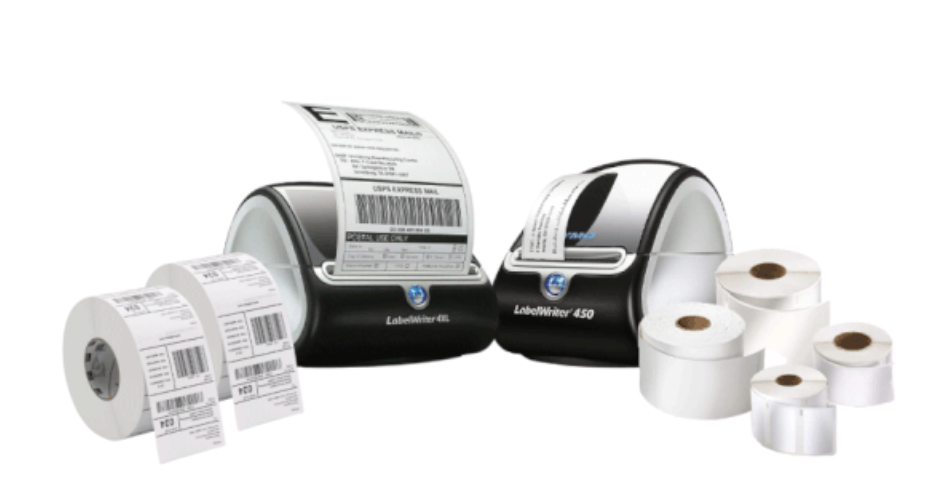
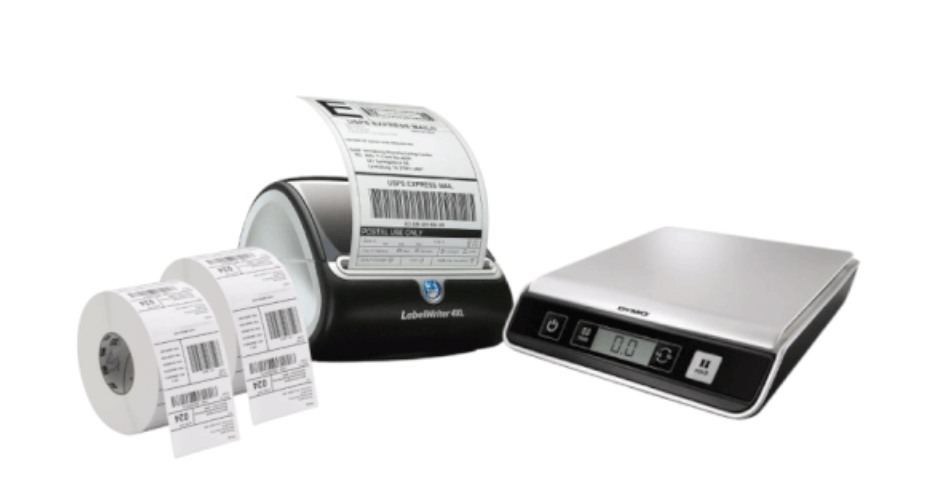
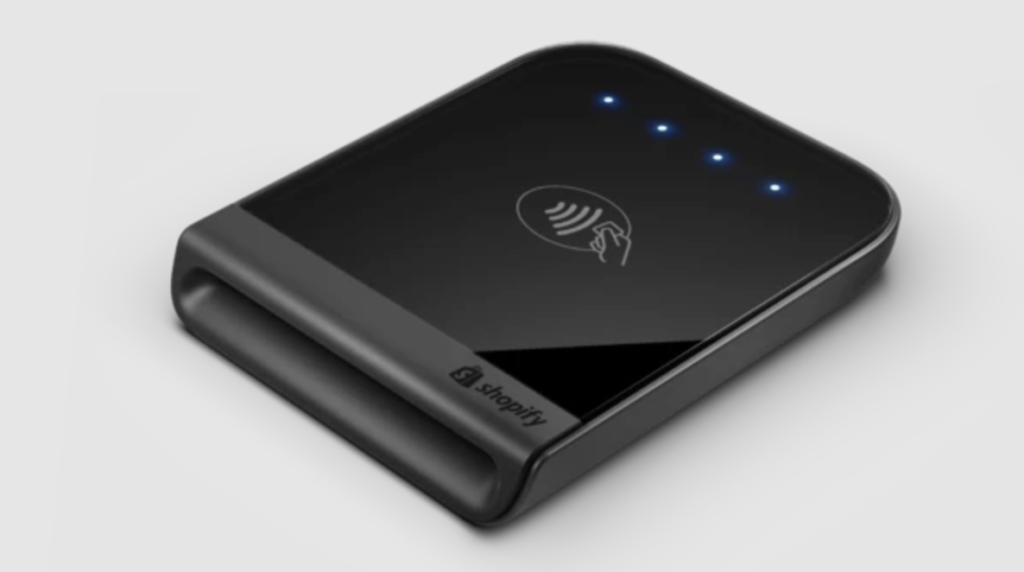
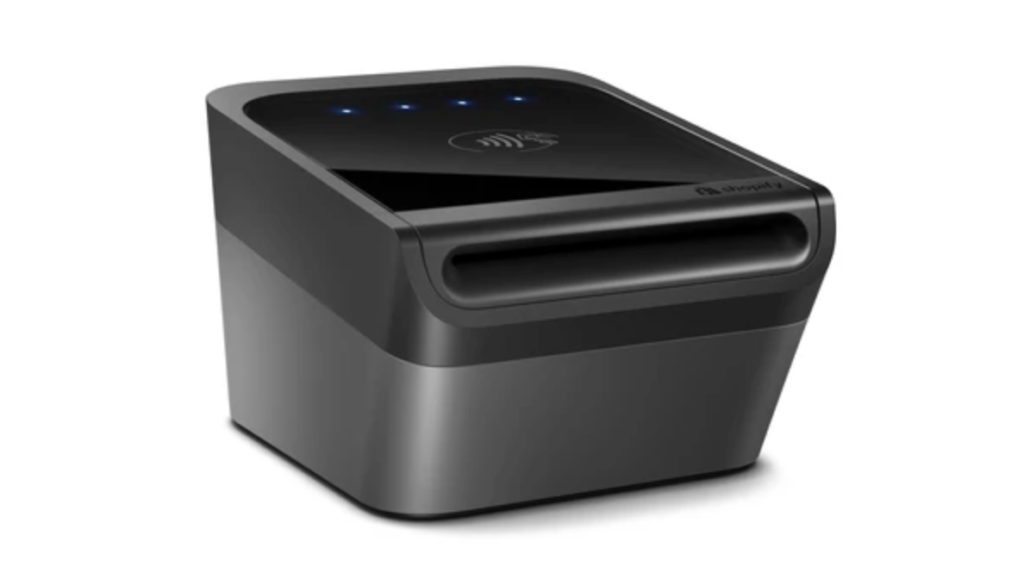
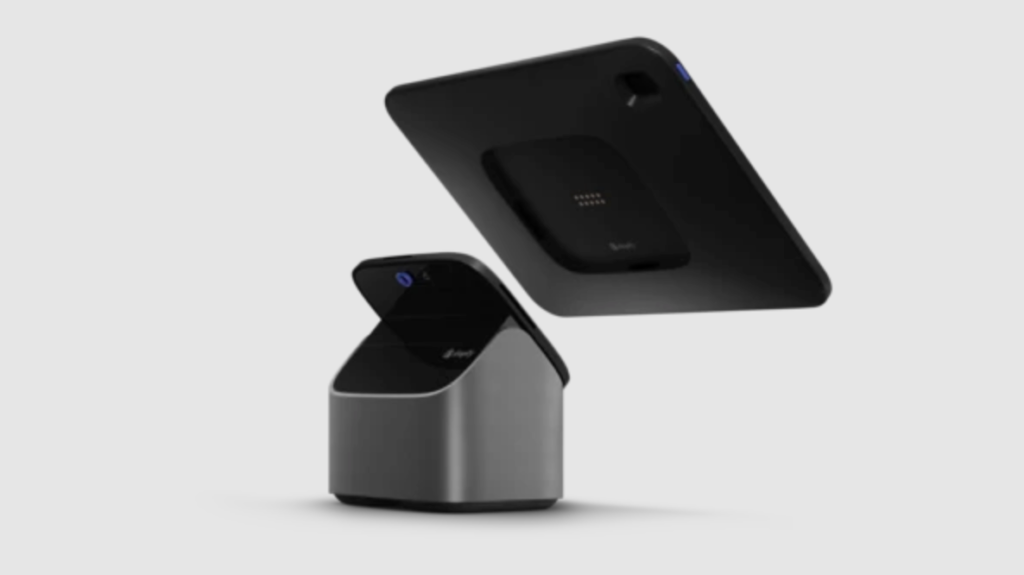

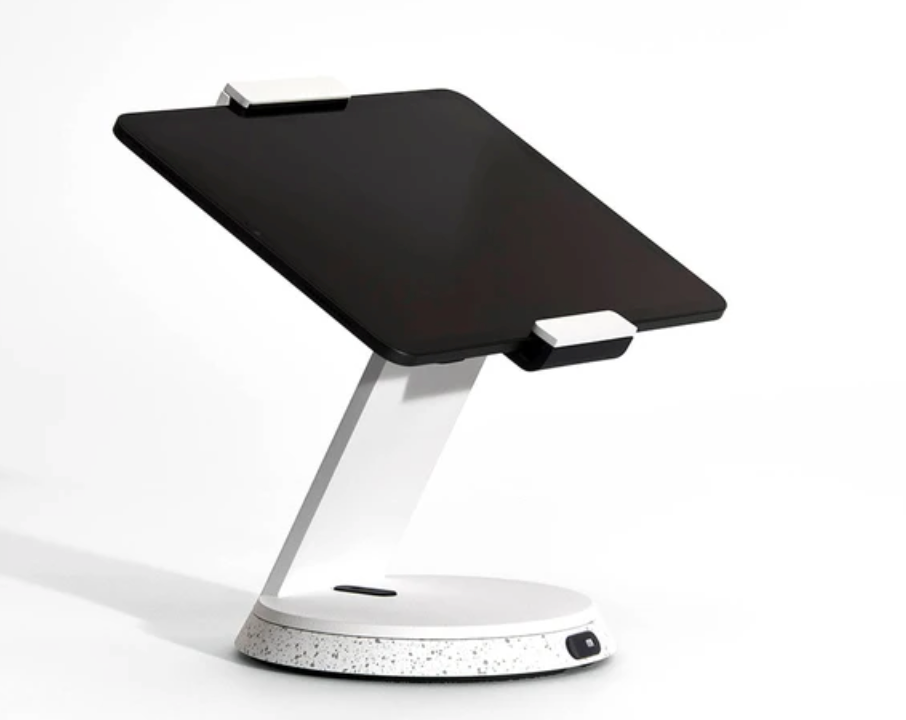
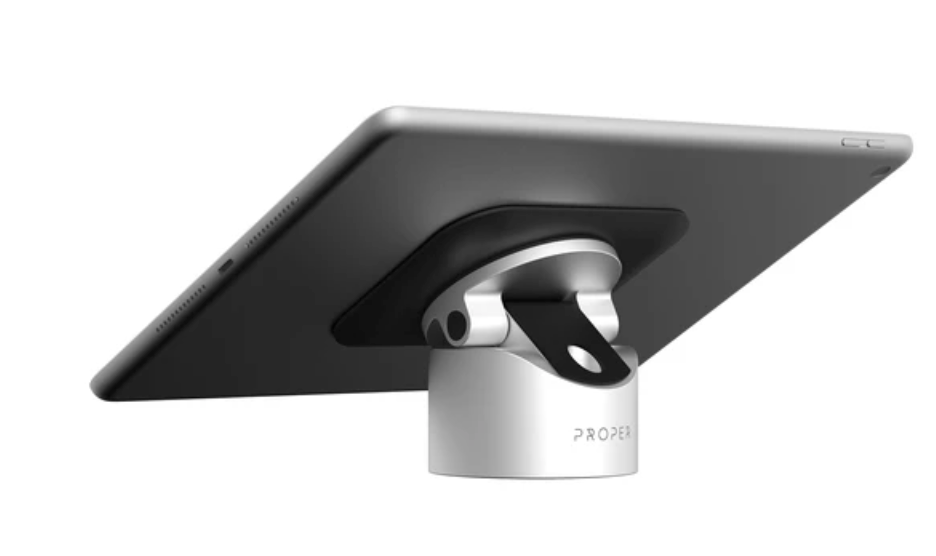

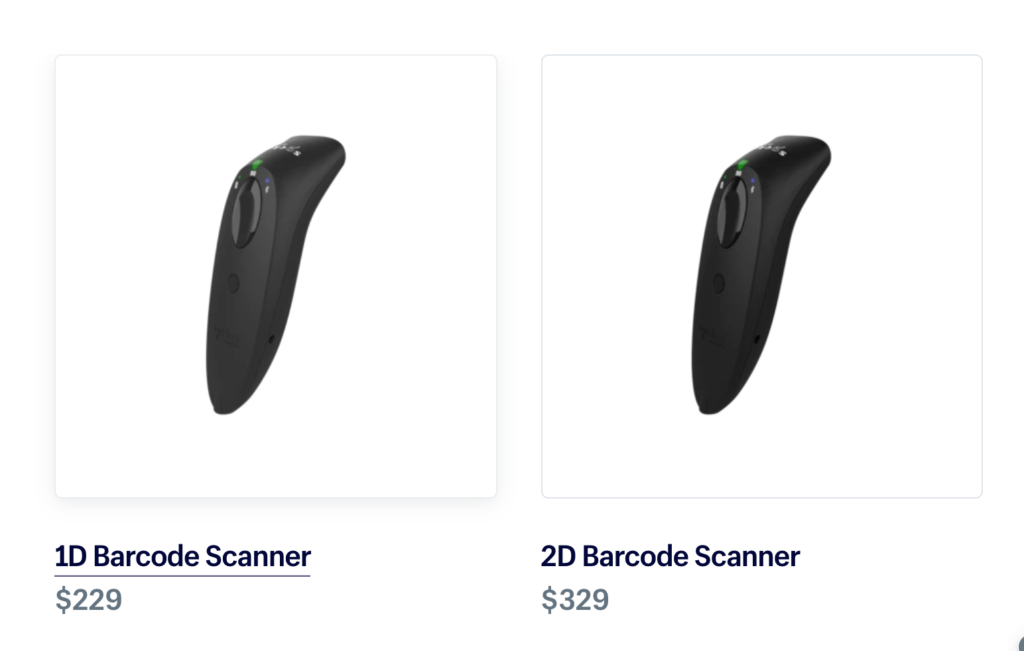
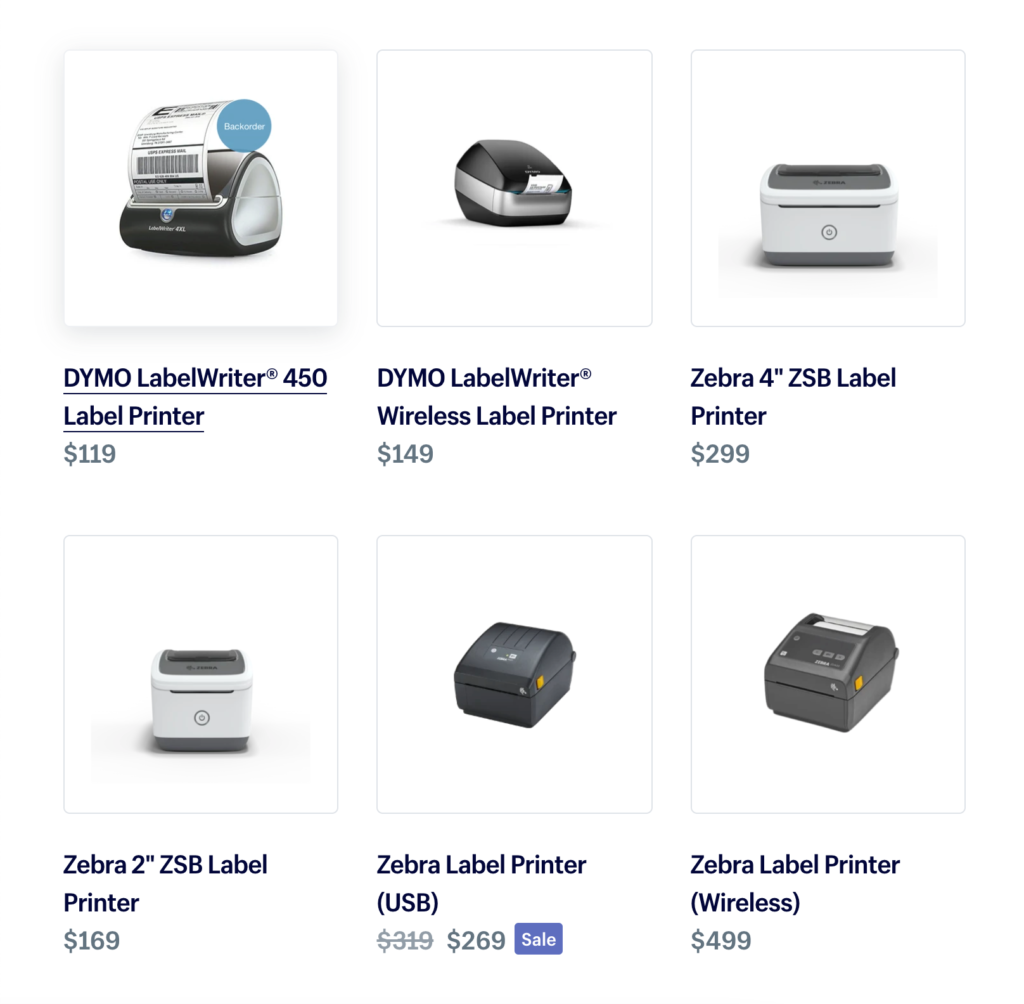
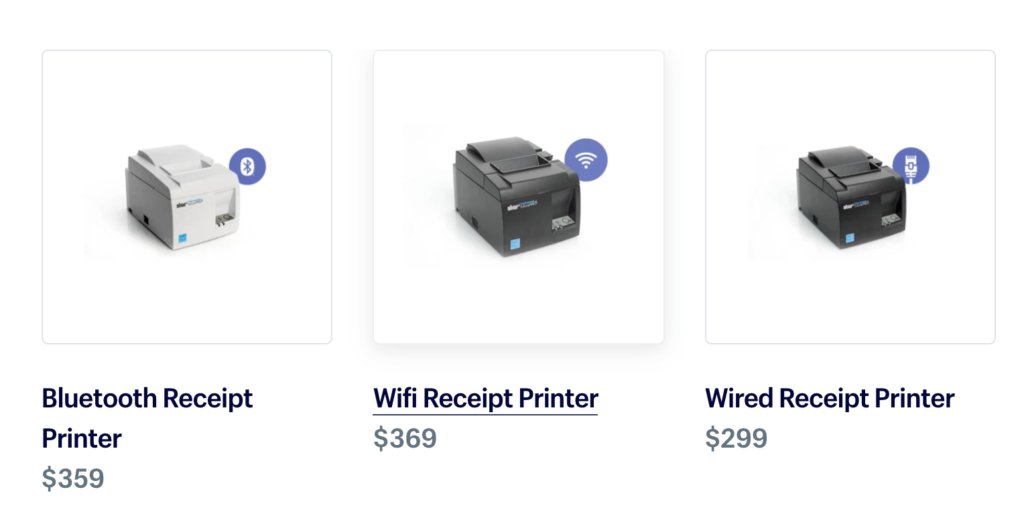
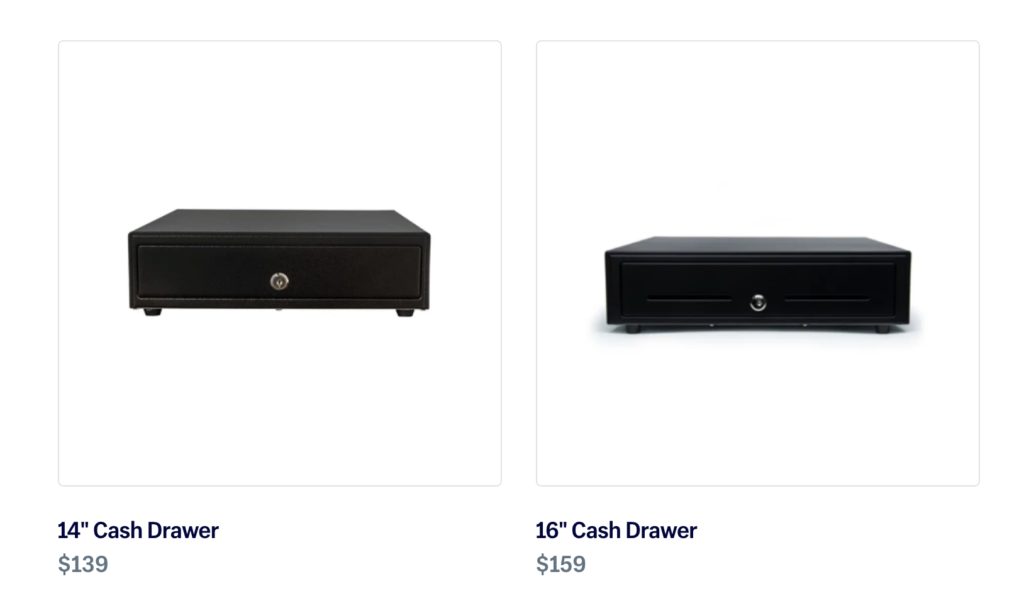
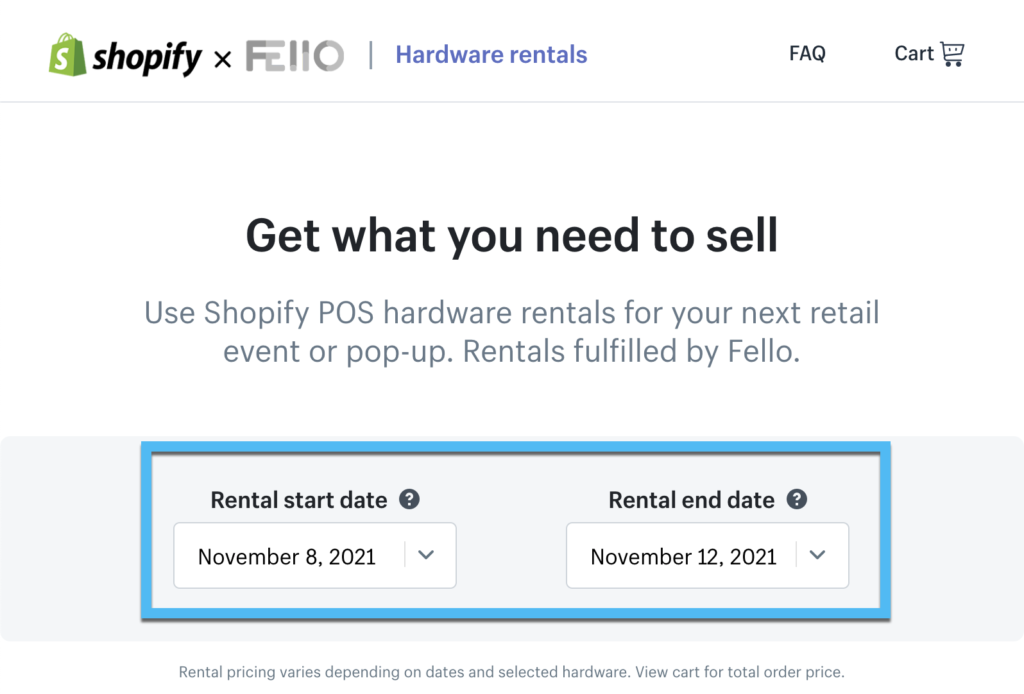
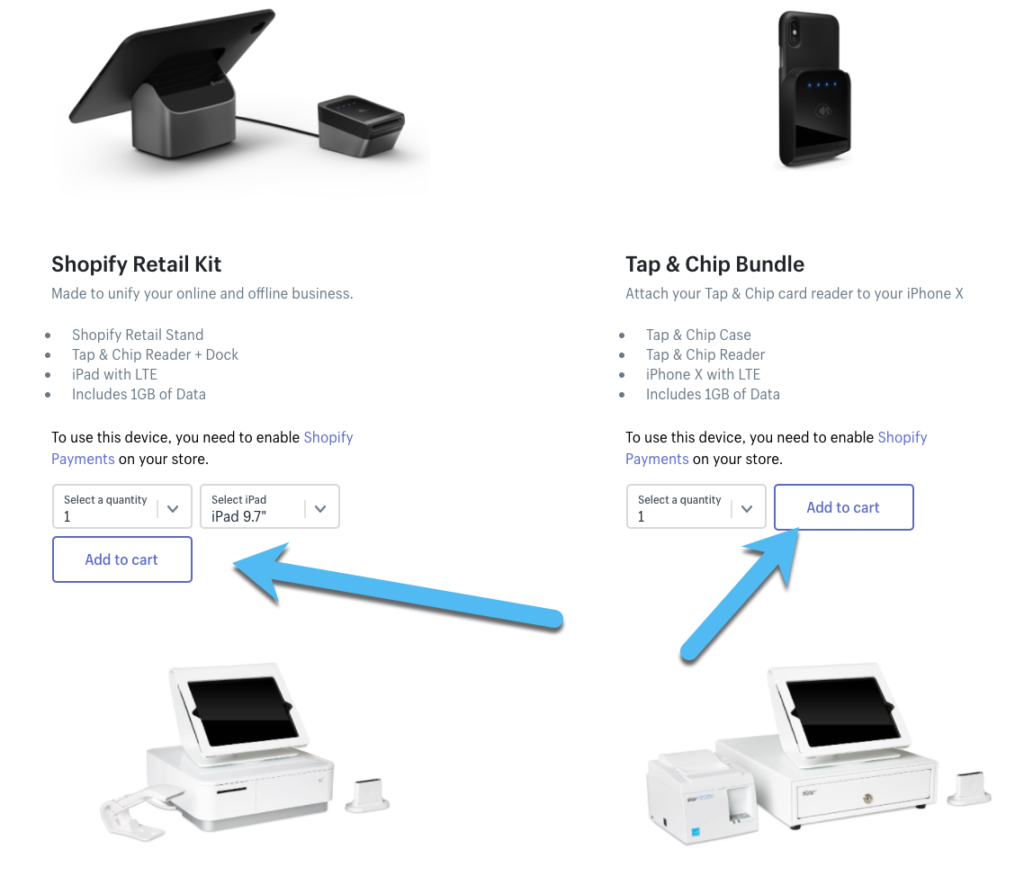
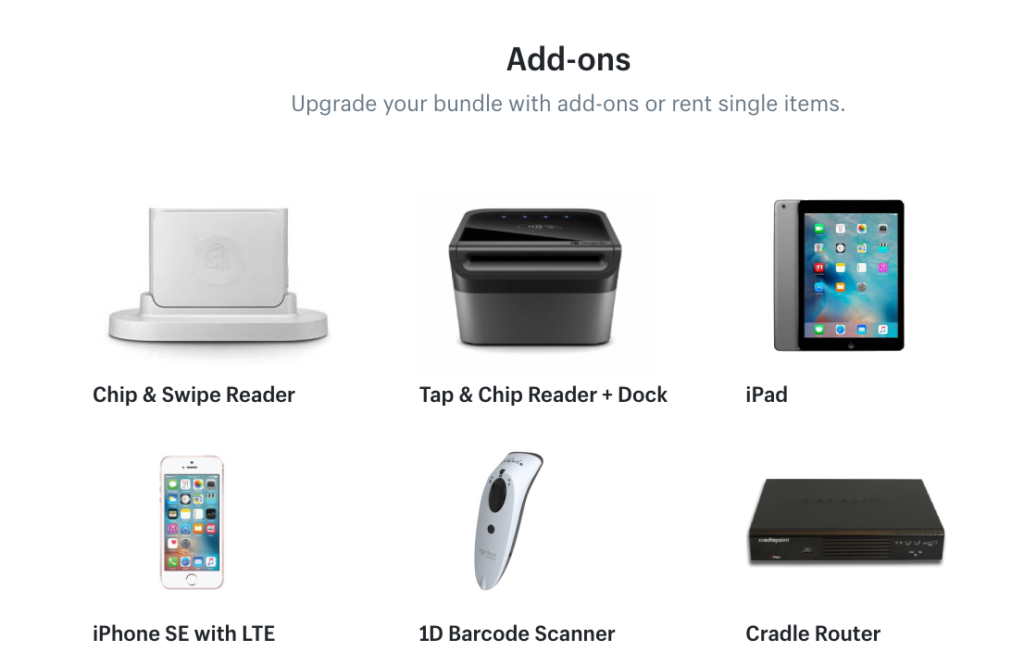

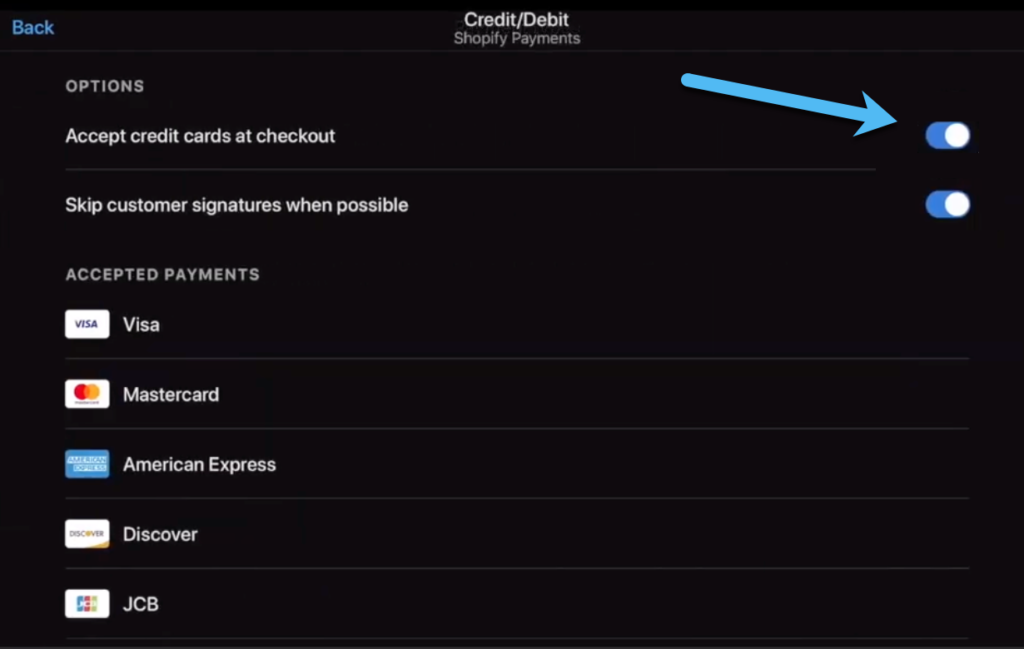
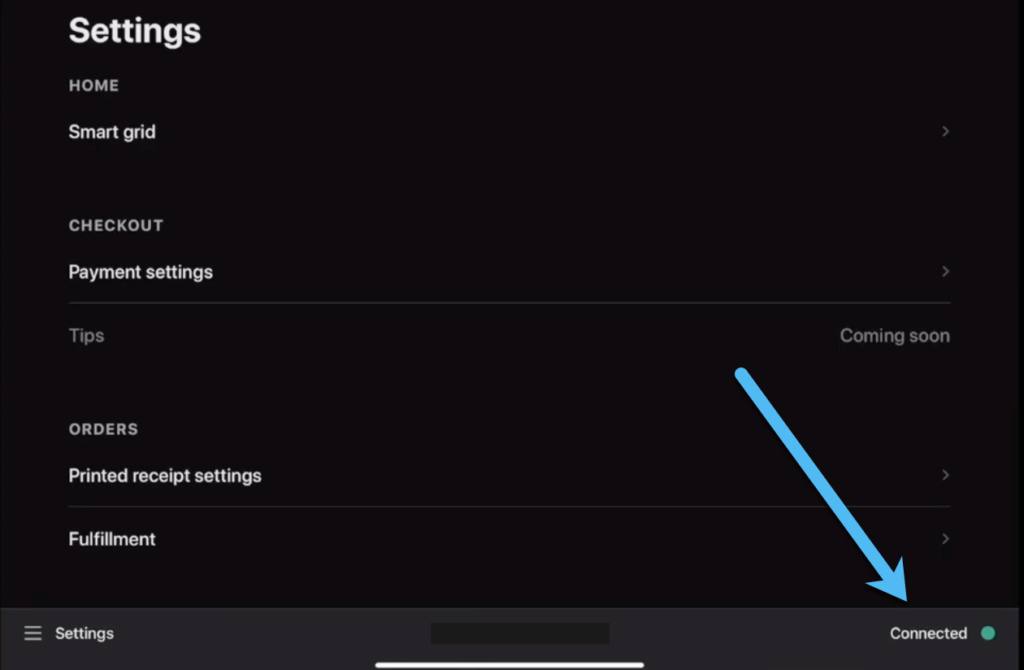
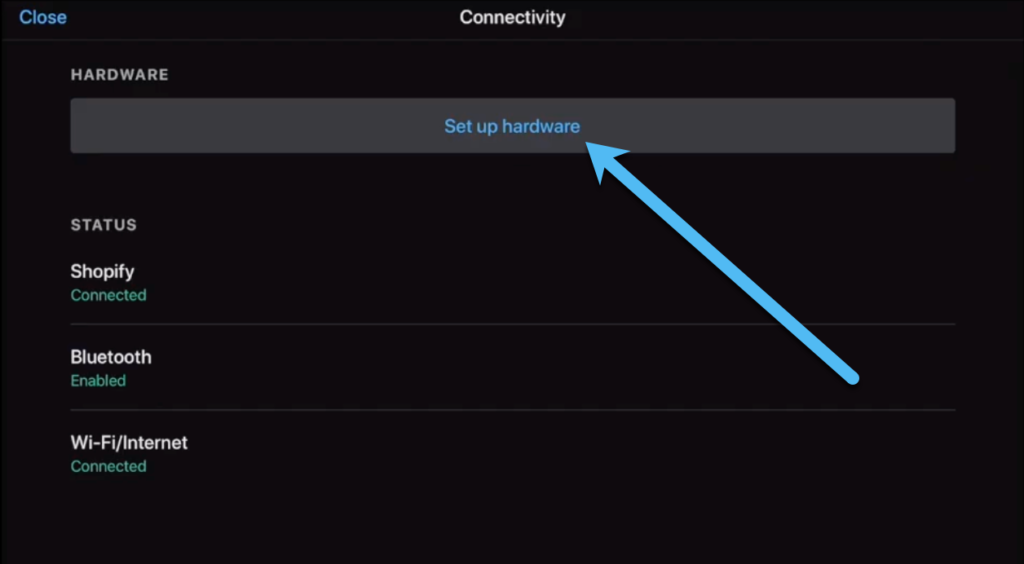
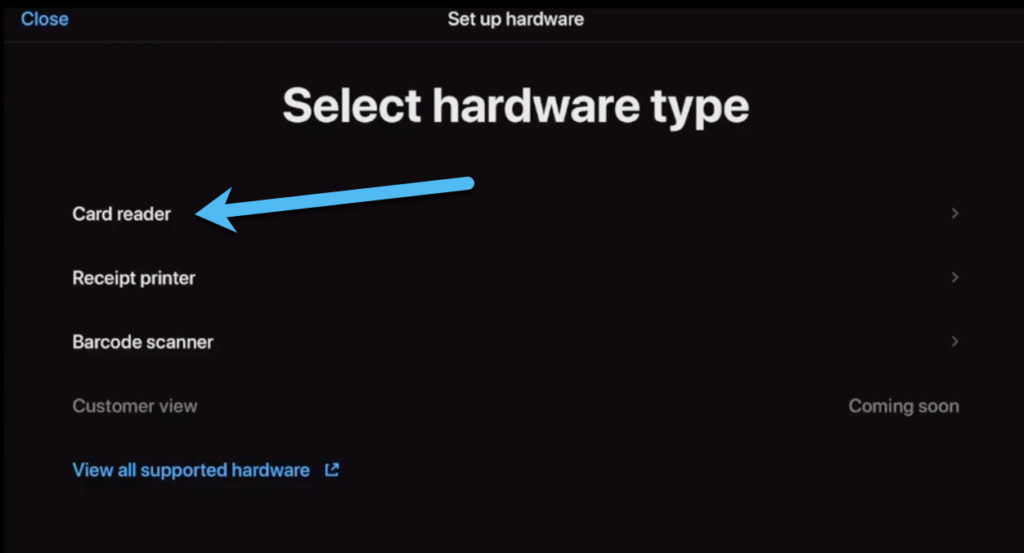
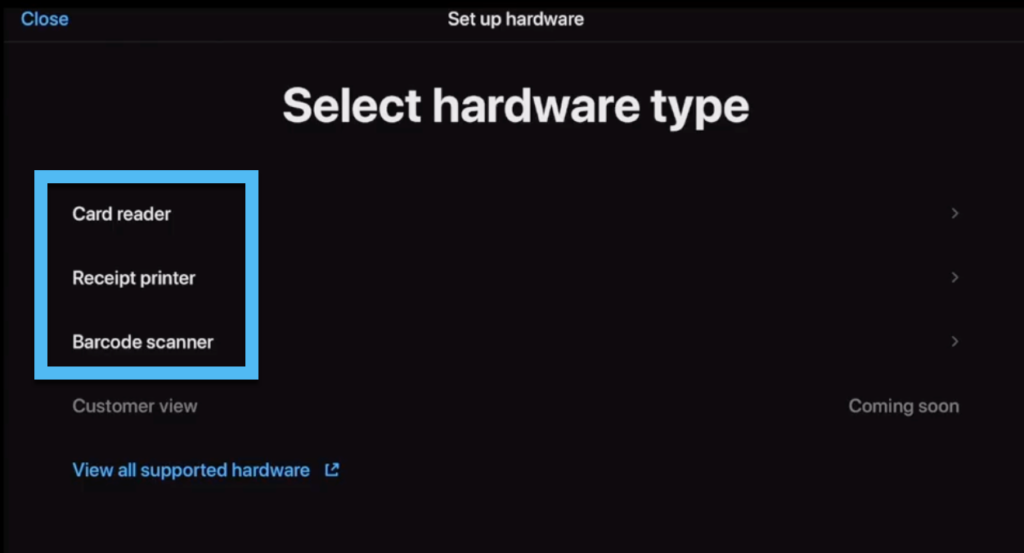

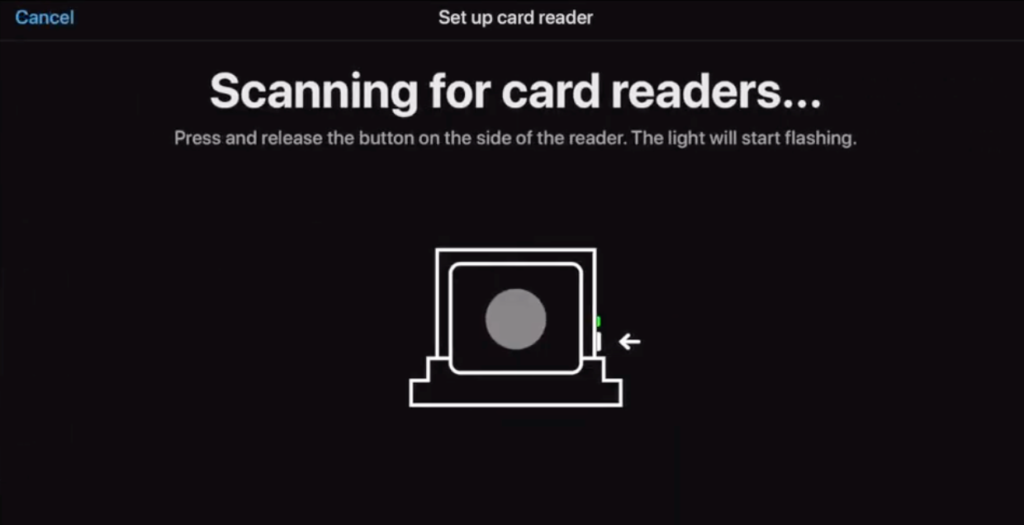


Comments 0 Responses